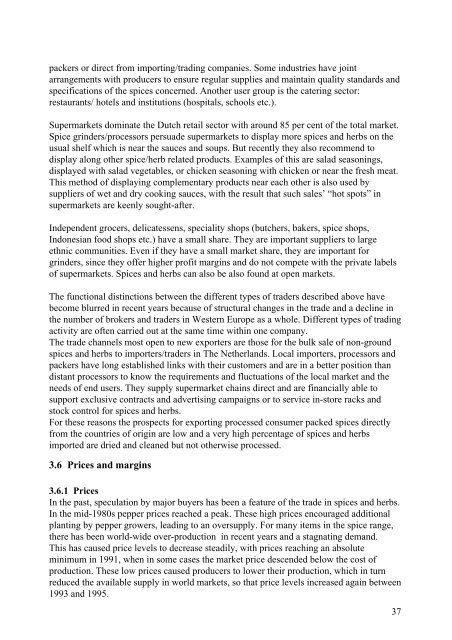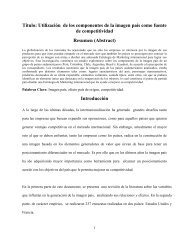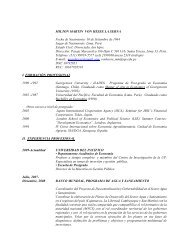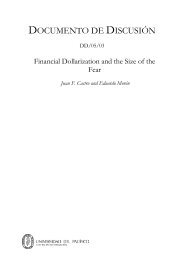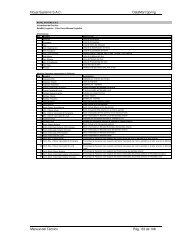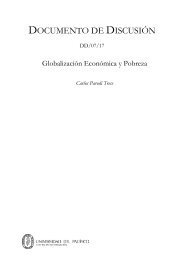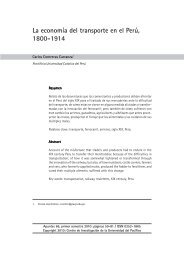Spices and Herbs
Spices and Herbs
Spices and Herbs
You also want an ePaper? Increase the reach of your titles
YUMPU automatically turns print PDFs into web optimized ePapers that Google loves.
packers or direct from importing/trading companies. Some industries have joint<br />
arrangements with producers to ensure regular supplies <strong>and</strong> maintain quality st<strong>and</strong>ards <strong>and</strong><br />
specifications of the spices concerned. Another user group is the catering sector:<br />
restaurants/ hotels <strong>and</strong> institutions (hospitals, schools etc.).<br />
Supermarkets dominate the Dutch retail sector with around 85 per cent of the total market.<br />
Spice grinders/processors persuade supermarkets to display more spices <strong>and</strong> herbs on the<br />
usual shelf which is near the sauces <strong>and</strong> soups. But recently they also recommend to<br />
display along other spice/herb related products. Examples of this are salad seasonings,<br />
displayed with salad vegetables, or chicken seasoning with chicken or near the fresh meat.<br />
This method of displaying complementary products near each other is also used by<br />
suppliers of wet <strong>and</strong> dry cooking sauces, with the result that such sales’ “hot spots” in<br />
supermarkets are keenly sought-after.<br />
Independent grocers, delicatessens, speciality shops (butchers, bakers, spice shops,<br />
Indonesian food shops etc.) have a small share. They are important suppliers to large<br />
ethnic communities. Even if they have a small market share, they are important for<br />
grinders, since they offer higher profit margins <strong>and</strong> do not compete with the private labels<br />
of supermarkets. <strong>Spices</strong> <strong>and</strong> herbs can also be also found at open markets.<br />
The functional distinctions between the different types of traders described above have<br />
become blurred in recent years because of structural changes in the trade <strong>and</strong> a decline in<br />
the number of brokers <strong>and</strong> traders in Western Europe as a whole. Different types of trading<br />
activity are often carried out at the same time within one company.<br />
The trade channels most open to new exporters are those for the bulk sale of non-ground<br />
spices <strong>and</strong> herbs to importers/traders in The Netherl<strong>and</strong>s. Local importers, processors <strong>and</strong><br />
packers have long established links with their customers <strong>and</strong> are in a better position than<br />
distant processors to know the requirements <strong>and</strong> fluctuations of the local market <strong>and</strong> the<br />
needs of end users. They supply supermarket chains direct <strong>and</strong> are financially able to<br />
support exclusive contracts <strong>and</strong> advertising campaigns or to service in-store racks <strong>and</strong><br />
stock control for spices <strong>and</strong> herbs.<br />
For these reasons the prospects for exporting processed consumer packed spices directly<br />
from the countries of origin are low <strong>and</strong> a very high percentage of spices <strong>and</strong> herbs<br />
imported are dried <strong>and</strong> cleaned but not otherwise processed.<br />
3.6 Prices <strong>and</strong> margins<br />
3.6.1 Prices<br />
In the past, speculation by major buyers has been a feature of the trade in spices <strong>and</strong> herbs.<br />
In the mid-1980s pepper prices reached a peak. These high prices encouraged additional<br />
planting by pepper growers, leading to an oversupply. For many items in the spice range,<br />
there has been world-wide over-production in recent years <strong>and</strong> a stagnating dem<strong>and</strong>.<br />
This has caused price levels to decrease steadily, with prices reaching an absolute<br />
minimum in 1991, when in some cases the market price descended below the cost of<br />
production. These low prices caused producers to lower their production, which in turn<br />
reduced the available supply in world markets, so that price levels increased again between<br />
1993 <strong>and</strong> 1995.<br />
37


